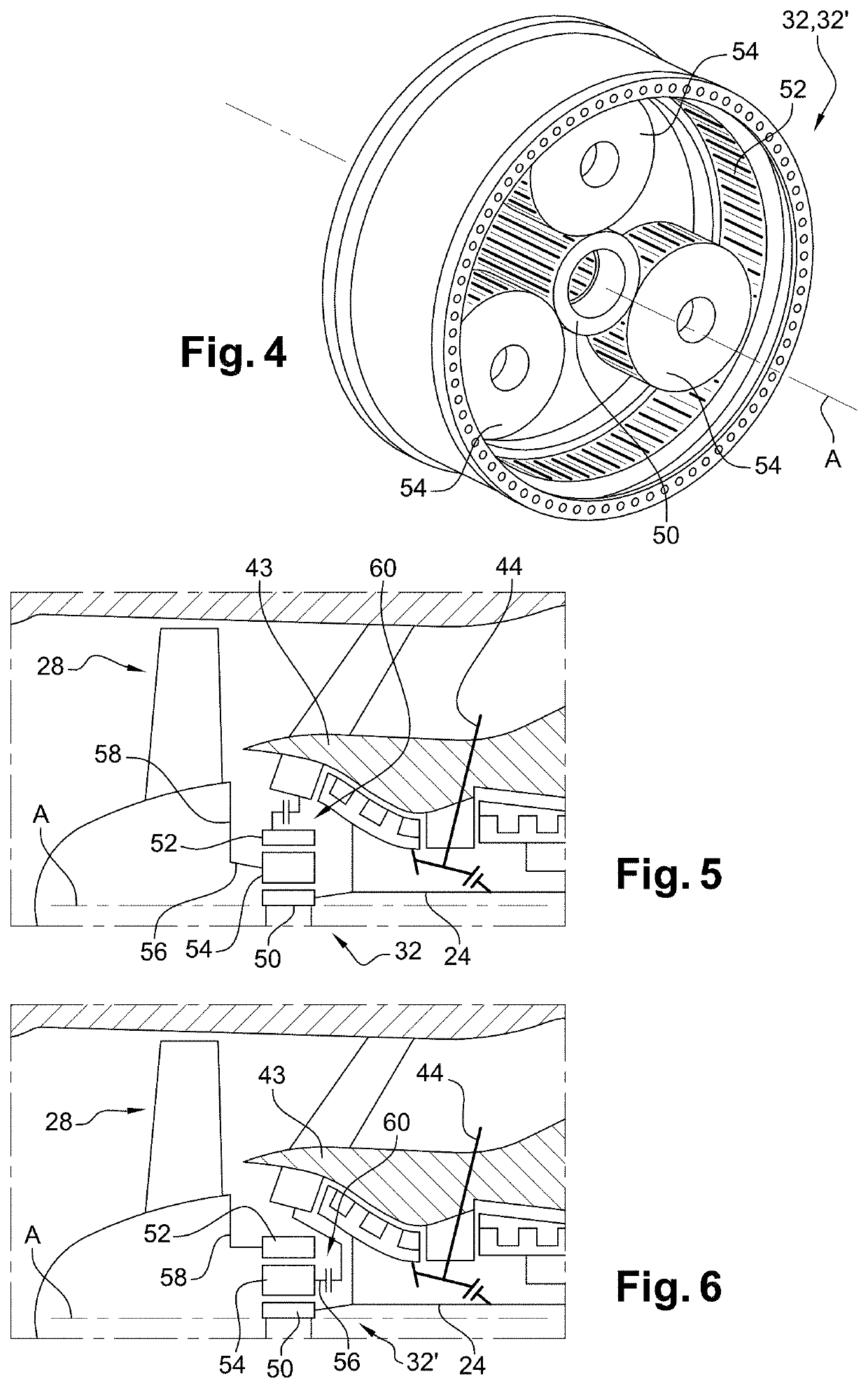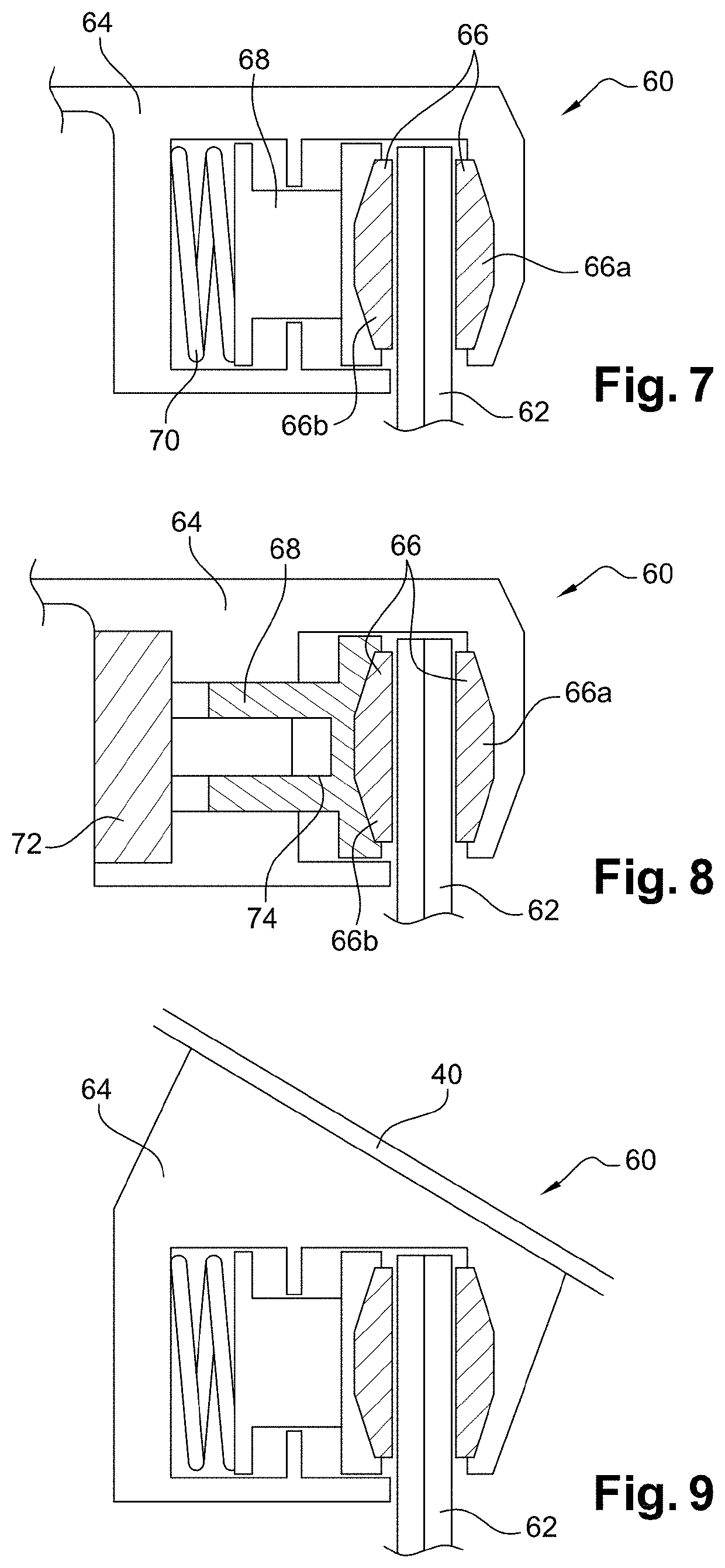Aircraft turbine engine with planetary or epicyclic gear train
a technology of planetary or epicyclic gear train and turbine engine, which is applied in the direction of engine starters, machines/engines, efficient propulsion technologies, etc., can solve the problems of mechanical offtake, add to the impact of mechanical offtake, and reduce the operability of hp compressors, so as to achieve simple, effective and economical solution, and the effect of starting the engin
- Summary
- Abstract
- Description
- Claims
- Application Information
AI Technical Summary
Benefits of technology
Problems solved by technology
Method used
Image
Examples
Embodiment Construction
[0045]Reference is first made to FIGS. 1 and 2, which schematically show a double-spool bypass aircraft turbine engine 10.
[0046]The turbine engine 10 comprises, in a conventional manner, a gas generator 12, on either side of which a low-pressure compressor 14 and a low-pressure turbine 16 are arranged, said gas generator 12 comprising a high-pressure compressor 18, a combustion chamber 20 and a high-pressure turbine 22. In the following, the terms “upstream” and “downstream” are regarded in a main direction F of flow of the gases in the turbine engine, said direction F being in parallel with the longitudinal axis A of the turbine engine.
[0047]The rotors of the low-pressure compressor 14 and of the low-pressure turbine 16 form a low-pressure or LP spool and are interconnected by a low-pressure or LP shaft 24 that is centred on the axis A. Similarly, the rotors of the high-pressure compressor 18 and of the high-pressure turbine 22 form a high-pressure or HP spool and are interconnecte...
PUM
 Login to View More
Login to View More Abstract
Description
Claims
Application Information
 Login to View More
Login to View More - R&D
- Intellectual Property
- Life Sciences
- Materials
- Tech Scout
- Unparalleled Data Quality
- Higher Quality Content
- 60% Fewer Hallucinations
Browse by: Latest US Patents, China's latest patents, Technical Efficacy Thesaurus, Application Domain, Technology Topic, Popular Technical Reports.
© 2025 PatSnap. All rights reserved.Legal|Privacy policy|Modern Slavery Act Transparency Statement|Sitemap|About US| Contact US: help@patsnap.com



